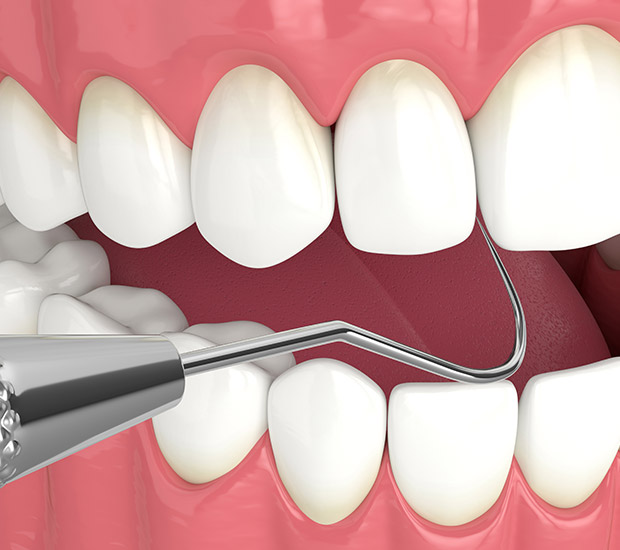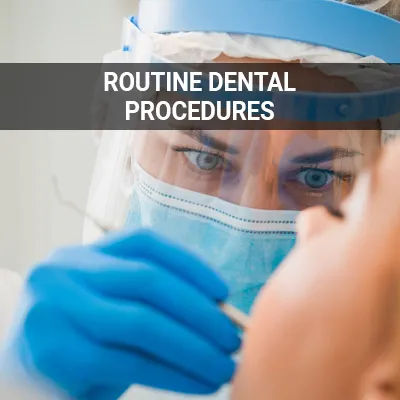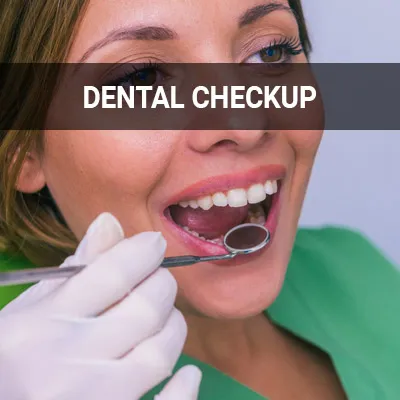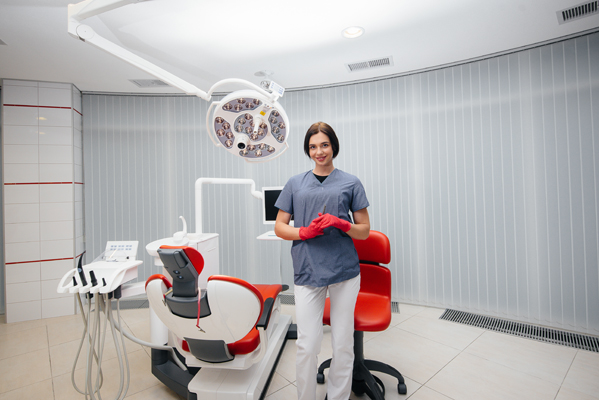Interactive Periodontal Probing Memphis, TN
Interactive periodontal probing is a method used to measure pocket depths around a tooth and establish a patient's state of health. It is also referred to as periodontal testing. Complete health dentists conduct these tests to determine tooth or gum issues as well as underlying health conditions that present themselves through gum health.
Periodontal probing is considered interactive as the dentist and patient both gain an in-depth understanding of each tooth's state and the mouth's overall condition. These insights help the dentist create a complete treatment plan that targets both the patient's oral and systemic health. The test can also diagnose a patient with periodontal disease in its early stages.
Interactive periodontal probing is available at Dental Partners White Station in Memphis and the surrounding area. Our staff can help you learn more about the test and answer any questions you have. Call us at (901) 201-4577 to schedule a consultation appointment today.
How Periodontal Test is Performed
Before the periodontal test, the dentist will likely review medical and dental histories, identify any factors contributing to symptoms, and examine the mouth. Returning patients who have undergone their initial consultation and regular checkup will have their record on file and does not need to be reviewed. However, we recommend having a thorough examination of the mouth prior to the periodontal test to check for any abnormalities or easy bleeding.
The test is performed by measuring the pocket depth of the grooves between the gums and teeth. We place a dental probe (a very thin, narrow instrument) beside your tooth beneath your gum line and scan over every tooth. According to the Mayo Clinic, the pocket depth in a healthy mouth is usually between 1 and 3 millimeters (mm). Pockets deeper than 4 mm may indicate periodontitis. It is not easy to clean pockets deeper than 5 mm, so we will go over possible options during the appointment. We will record these numbers on a periodontal chart.
“Pockets deeper than 4 mm may indicate periodontitis.”
Periodontal Charting
Periodontal charting is a part of a patient's dental or gum chart that indicates the state of the teeth and mouth's health. A periodontal chart includes six measurements (in millimeters) that are taken around each tooth. The main reason for periodontal charting is checking for periodontal disease, but it is also beneficial to check for many other oral and systemic health concerns.
What It Reveals
The chart is a pictorial representation of the mouth and includes graphics and information pertaining to the tests conducted during the first appointment. Healthline provides the conditions and issues that a periodontal test and chart reveal:
- areas of decay (cavities)
- missing teeth
- depths of your gum pockets, bleeding points during probing, and gum recession
- abnormalities in your teeth, such as rotations, erosion, or abrasions in your teeth or enamel
- damage to your teeth
- presence of crowns, bridges, implants, and fillings
- attachment of your teeth to the gums
- any movement in your teeth
- any bleeding in your gums
“A periodontal chart includes six measurements (in millimeters) that are taken around each tooth.”
Risk Assessment That Dentist Makes
Periodontal probing and charting allow dentists to assess a patient's risk of acquiring periodontal disease as well as other oral and systemic diseases. A Journal of Periodontology study on risk factors explains: "risk factors may be broadly categorized as: Systemic risk factors - factors that affect the host response to the plaque biofilm, upsetting the host-microbial balance; and Local risk factors - factors local to the oral cavity, which may influence plaque accumulation or occlusal forces." A periodontal chart reveals which factors are in play and their causes.
Risk assessments classify risks in terms of risk factors, risk indicators, and risk predictors. Risk factors include age, tobacco use, diabetes, stress, genetics, pregnancy, cardiovascular diseases, and poor oral hygiene. Risk indicators indicate whether visible risk factors, such as the presence of herpes viruses in subgingival plaque, are cause of an oral or systemic condition. Risk predictors are factors that have no current biological causing agent but have been associated with disease. For example, the number of missing teeth is a risk predictor for disease but may not indicate current periodontitis.
“A periodontal chart reveals which factors are in play and their causes.”
Check out what others are saying about our dental services on Yelp: Interactive Periodontal Probing in Memphis, TN
Who Should Receive Periodontal Testing
Although some people may be more at risk than others in terms of acquiring periodontal disease, the American Academy of Periodontology recommends all adults receive annual screenings. A Comprehensive Periodontal Evaluation, or CPE, assesses the patient's periodontal health by examining their teeth, amount of plaque, gums, bite, bone structure, and risk factors. Periodontal testing and the CPE are often done during the initial appointment.
Patients who are at high risk of developing periodontal disease may be asked to undergo testing more than once a year. Factors that contribute to high-risk include:
- Gingivitis
- Poor oral health habits
- Smoking or chewing tobacco
- Hormonal changes, such as those related to pregnancy or menopause
- Recreational drug use, such as smoking marijuana or vaping
- Obesity
- Inadequate nutrition, including vitamin C deficiency
- Genetics
- Certain medications that cause dry mouth or gum changes
- Conditions that cause decreased immunity, such as leukemia, HIV/AIDS and cancer treatment
- Certain diseases, such as diabetes, rheumatoid arthritis and Crohn’s disease
“Although some people may be more at risk than others in terms of acquiring periodontal disease, the American Academy of Periodontology recommends all adults be screened annually.”
Questions Answered on This Page
Q. How is the periodontal test performed?
Q. What does periodontal probing reveal?
Q. What is a risk assessment and what does it show?
People Also Ask
Q. What are the signs of gum disease?
Q. What can I do about receding gums?
Q. Why is preventative care important? How can it save you money?
Frequently Asked Questions About Interactive Periodontal Probing
Q. How often should periodontal probing be done?
A. Most dentists and periodontists recommend all adults be tested once a year to reduce risks and prevalence of the disease. However, we may recommend a patient undergo periodontal probing more than once if we suspect any risk factors or developing conditions. A patient may also request an evaluation if they have symptoms, pain in the gums, or excessive bleeding.
Q. Does periodontal probing hurt?
A. Periodontal probing should not cause pain or discomfort unless the tissue is inflamed or the dentist's technique is heavy-handed. If the tissue is inflamed and sore, we use a small amount of topical anesthetic to alleviate discomfort. We also do our best to be soft-handed and handle the instrument carefully to smoothen the glide over the teeth.
Q. Does periodontal probing cause the gums to bleed?
A. Gingival bleeding is largely influenced by probing pressure, technique, and type of periodontal probe. Excessive pressure and improper technique can cause healthy tissue to bleed. Bleeding tendency is higher in thinner gingival tissue compared to thicker tissue. These factors are assessed during our examination of the mouth and will be discussed prior to probing.
Q. If I am diagnosed with periodontal disease, how often do I need to come in for cleanings?
A. Periodontal disease is a chronic bacterial infection and therefore, these deep infected areas are not accessible by brushing and flossing. We need to manually remove all the bacterial toxins with specialized ultrasonic or hand instruments not readily available in store. To prevent further bone loss or gum breakdown, receive regular cleanings at least once every 90-120 days.
Dental Terminology
Call Us Today
If you are looking for more information pertaining to periodontal probing or testing, call us today at 901-201-4577 to learn more or make an appointment.
Helpful Related Links
- American Dental Association (ADA). Glossary of Dental Clinical Terms. 2023
About our business and website security
- We accept the following payment methods: American Express, Cash, Check, Discover, MasterCard, and Visa
- We serve patients from the following counties: Shelby County
- We serve patients from the following cities: Memphis, Germantown, Bartlett, Collierville, and Lakeland
- National Provider Identifier Database (1922262435). View NPI Registry Information
- Healthgrades. View Background Information and Reviews
- Norton Safe Web. View Details
- Trend Micro Site Safety Center. View Details
Back to top of Interactive Periodontal Probing










